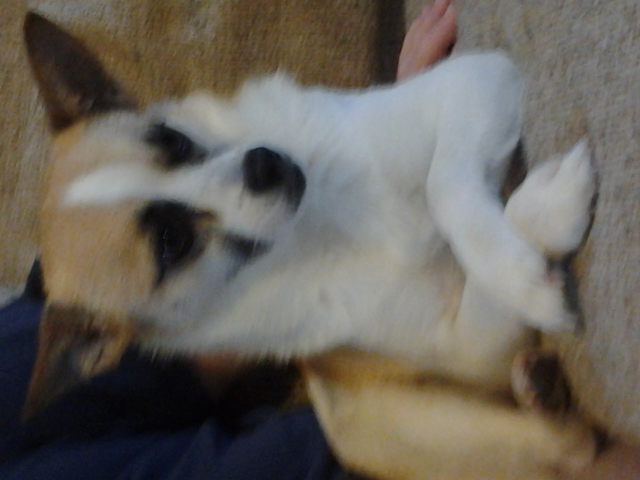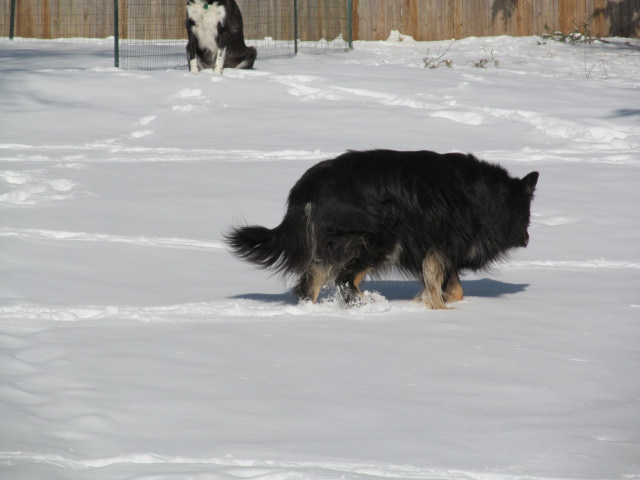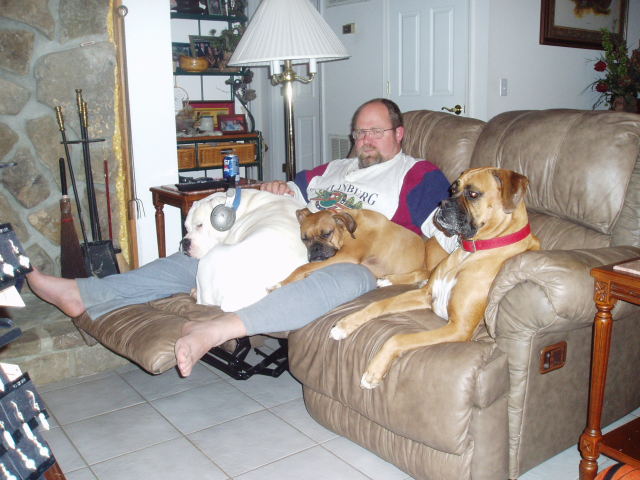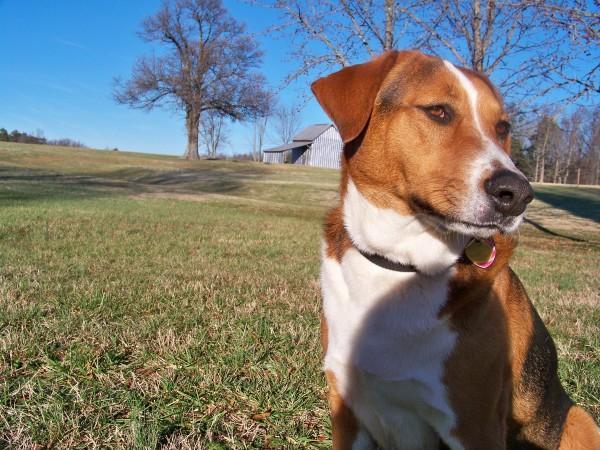QuestionHello,
Thank you for volunteering. Hopefully you can give me a word or two of advise. I have a two year old black lab that I've had since he was 8 weeks old. He's such a great dog that I have a hard time complaining but my primary pain in the back side is walking him on a leash as he is a puller. I've tried different harnesses, gentle leader (I was persistant but he continued to rub his nose raw), slip collar, retractible lead (worked great for three days), I always go back to the prong collar. He still pulls with that but is more managable although a sharp tug doesn't bother him. My wife still cannot walk him by her self as he will continue to pull her down the road. I have thought about a shock collar and hoped you could give me some advise on that subject. For some back ground on "Duke" and us. He lives in the house and has a fenced back yard to run in. When off leash, he'll take off after deer, rabbits and whatever else that happens by (skunks). I bring him to the beach to swim but if children or another dog is nearby he can't help himself and has to investigate and say hello. Otherwise he will come when called. I'm thinking a shock collar may help in that regard as well.
Thank you!
James
AnswerIf you have done much reading, I am sure you have read quite a bit about how effective the Gentle Leader and other head collars and the prong collar are. You may have even found one of my posts on the net about the head collars. What you need to do is to teach Duke to read and then he will understand that he should not pull with the Gentle Leader or prong collar.
If that doesn't work, there are a couple of training things you could try. First you need to take over as top dog. The dogs see all the
people and dogs in the household as a pack with each having their own rank in
the pack and a top dog. Life is much easier if the 2 legged pack members
outrank the 4 legged ones. You can learn to play the role of top dog by
reading some books or going to a good obedience class. A good obedience class
or book is about you being top dog, not about rewarding standard commands with
a treat. Start at http://www.dogsbestfriend.com/ One advantage of a class is that the instructor may be able to help you make the head or prong collar more effective. I have never used a prong collar, and haven't needed the head collar with most of the dogs since I learned about it. I know other people that do use it with the same good results I have had with it. I have seen problems with the strap cutting into nose, but do not know the solution. To be safe and effective, the prong collar must be adjusted by somebody who know what they are doing. It is the first resort for many obedience instructors. As long as they know what they are doing, that is OK. It may take another 25 years before they accept the new fangled head collars. You might also seek advice from Gentle Leader on the nose strap problem. A web search should turn up a website with a contact us button. You could also check the box or directions for contact information. If you don't have them, check the store where you bought it.
You might go back to the slip collar, the metal chain ones with the rings on each end. You want the shortest one that will go on and off easily. If you walk with the dog on the left, pull the chain through one loop forming a "P". Facing it, slip it over its head. The free end should come over the neck to the leash, and the other end should drop slack when there is no pull on the leash. You can work up to forceful corrections with the leash doubled up in both hands and your whole body behind it, but that is too hard on my old joints and likely beyond your wife. A better, gentler technique I like is to just stop when he pulls. He wants to go. Does he come running when you pick up the leash? Does the word ''walk'' set him bouncing? Most dogs love walks. If you move forward when the leash is slack, and stop when he pulls, he should quickly figure out the only way to get to go, is not to pull. This is about teaching him not to pull, not getting somewhere. The man that taught it to me said "If in a half
hour you haven't made it out to the front walk, fine, you have taught him a
lesson. A variation on that is to stop and turn around.
I do very little off lead work. I have never worked with a shock collar. They are again a tool where you need somebody who knows the proper use of it to teach you. I would use it only as the absolute last alternative. One more thing you might look at is a gadget for the leash that makes a noise when pulled on. It makes the quick, consistent corrections dogs respond to. I have seen them, but can't say where.
He may settle down when he turns 3. On the other hand, you may never be able to correct him. I hadn't though I had done that bad of a job with the one dog I raised for a dog guide school. The professionals there worked with her for 2 years before giving up on her as a dog guide.
We visited the dog guide school school recently. Thought I would share some of what I learned. One of their veterinarians gave a talk on current hazards. Xylitol, a newer artificial sweetener finding wide use in sugar free gums, is very bad for dogs, see http://www.poynter.org/column.asp?id=2&aid=75125 The word on grapes and raisins being toxic to dogs has been around for a while, but new findings show some dogs are very sensitive to them, only taking a few to kill them. Her last point was bottle caps. Their sharp edges can cut dogs internally is swallowed. And like many other things, they can block the digestive tract. She had some nice X-rays of dogs that had swallowed all sorts of things. They fish the bottle caps out with a magnet. Other stuff, they have to operate.

 Abby
Question
Abby Abby
what breed of dog do yo
Abby
Question
Abby Abby
what breed of dog do yo
 Old dog, old owner, grooming issues
Question
Jessis
I have a 13-yr-old German shephe
Old dog, old owner, grooming issues
Question
Jessis
I have a 13-yr-old German shephe
 aggressive behavior between my 3 dogs
Question
My loves watching tv
I have always had boxers,
aggressive behavior between my 3 dogs
Question
My loves watching tv
I have always had boxers,
 My dogs agression
Question
This is my dog
Hi Shelley!
I have a question f
My dogs agression
Question
This is my dog
Hi Shelley!
I have a question f
 Growth on dogs right foreleg
Question
Foreleg 1 Foreleg 2
Hi Gary,
Our
Growth on dogs right foreleg
Question
Foreleg 1 Foreleg 2
Hi Gary,
Our